Nukskahtowin opens Linda Bull Memorial Garden and Bertha Clark-Jones O.C. Art Gallery
Trigger warning: residential schools, death
Spaces on Athabasca University campus honour residential school Survivors and families, and legacies of Linda Bull and Bertha Clark-Jones
A new memorial garden and art gallery at Athabasca University’s (AU) campus offer spaces for quiet contemplation and reflection to remember the lives lost and Survivors of Canada’s residential school system.
AU’s Indigenous unit, Nukskahtowin, which means meeting place in Cree, hosted the Sept. 27 opening of the Linda Bull Memorial Garden and Bertha Clark-Jones O.C. Art Gallery. The garden honours the legacy of the late Linda Bull, O.C., who was Cree and one of AU’s first Indigenous academics, while the art gallery is named after Bertha Clark-Jones, O.C., a Cree-Métis who devoted her life to advocacy, in particular for Indigenous women and children.
Linda Bull Memorial Garden
Priscilla Campeau, Nukskahtowin chair and program administrator, told the 100 community members, staff, and families of Bull and Clark-Jones in attendance that the idea for the memorial garden arose from the tragedy of the 215 Indigenous children whose remains are buried near the former Kamloops Indian Residential School, in Tk’emlúps te Secwépemc territory. AU lowered its flags to half-staff for 215 days following the tragic news, but wanted a more permanent memorial.
“We decided that we needed to create a memorial garden, a place of reflection for both AU staff and the Athabasca community, where people could come together and remember the lives lost in those residential schools,” Campeau said, “to reflect on what mistakes were made in the past to make amends in our own lives and to work towards what we call reconciliation—or what we at Nukskahtowin call conciliation.”
The garden, located outside the Academic Research Centre, embodies the shape of a Medicine Wheel with 4 benches that represent each season, direction, the 4 winds, and the 4 races.
AU Elder in Residence Maria Campbell said the first circle in the garden represents the children, “They represent our future.” The second circle represents grandparents, she added. “They represent our past. They carry all of our knowledge and our teachings. Those are the 2 we should really honour and take care of.”
To help celebrate its opening, attendees, including local children, placed stones to mark the garden’s perimeter and to make an offering to the Creator. The stones represent the Rock People, “our oldest ancestors,” who will surround the garden and protect it for us.
“The stones are really special because they heal us, they’ve provided us with tools, they doctor us, they have the oldest stories,” Campbell explained.
The stones are really special because they heal us, they’ve provided us with tools, they doctor us, they have the oldest stories. Maria Campbell, Elder in Residence
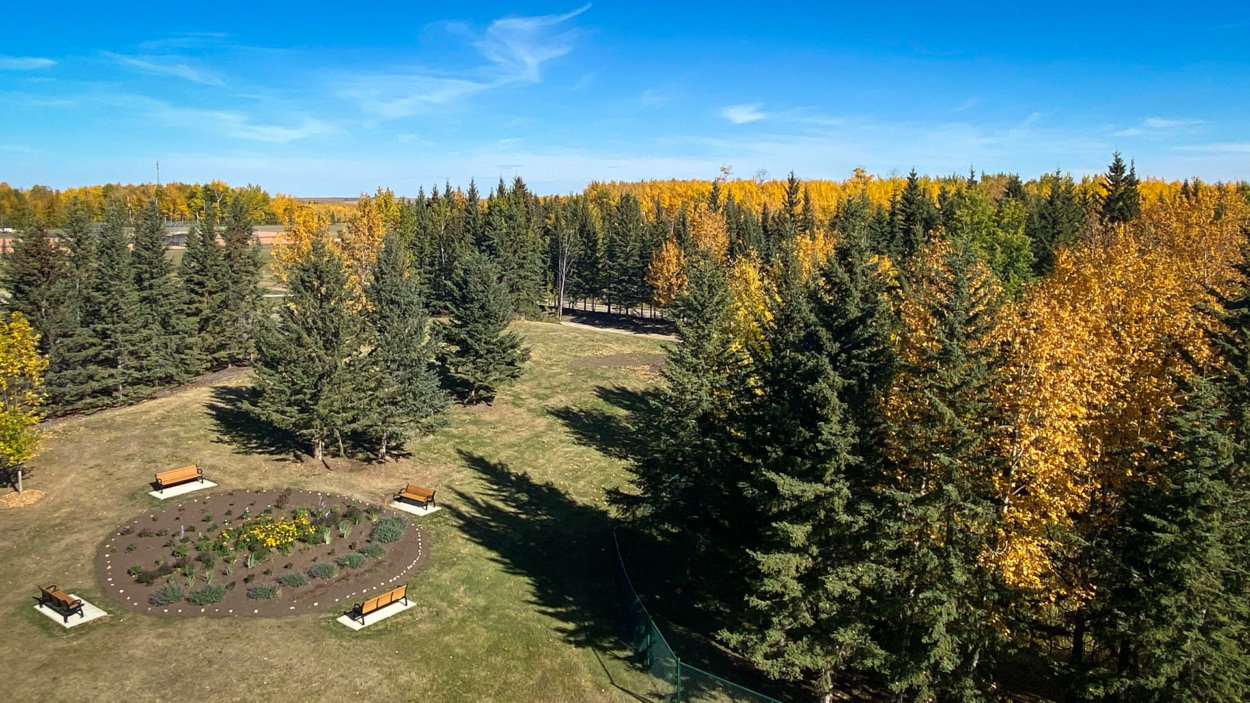
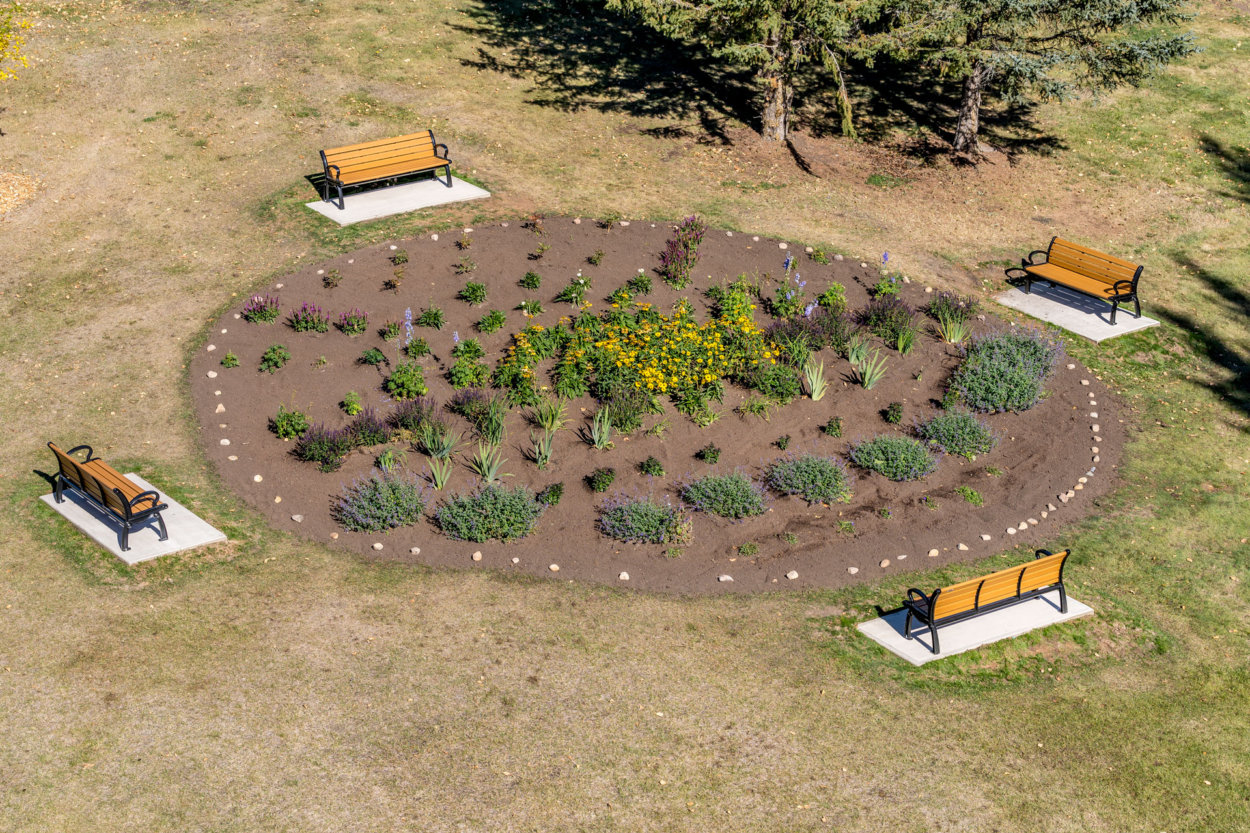
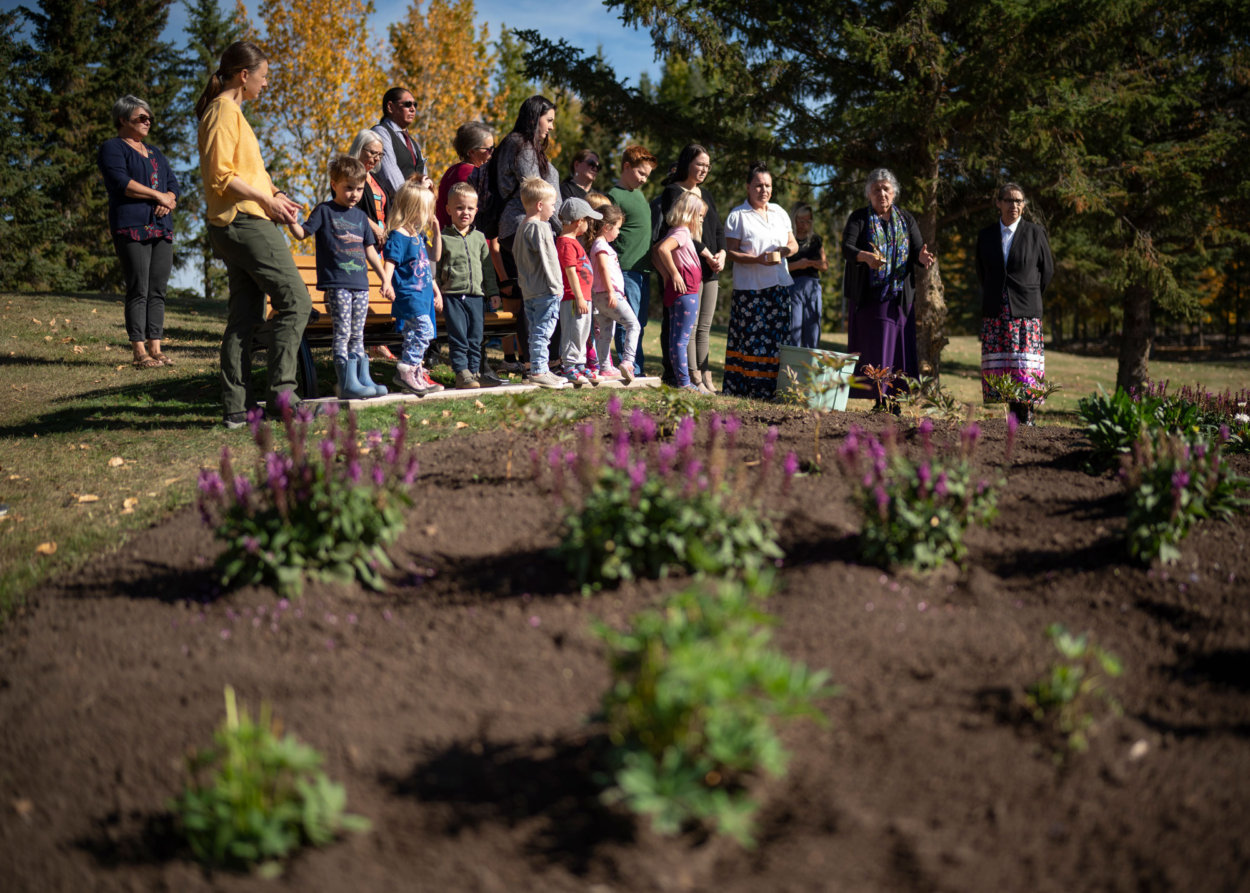
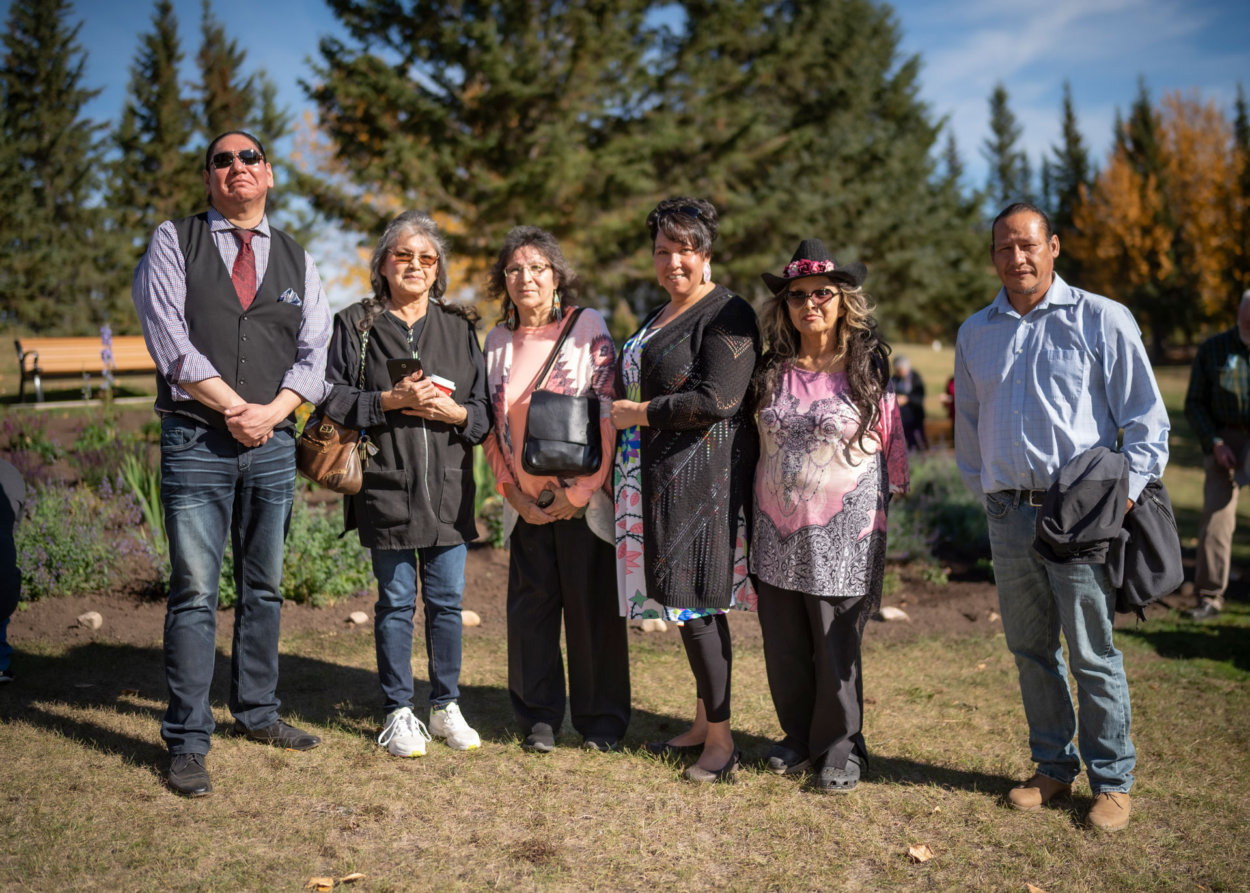
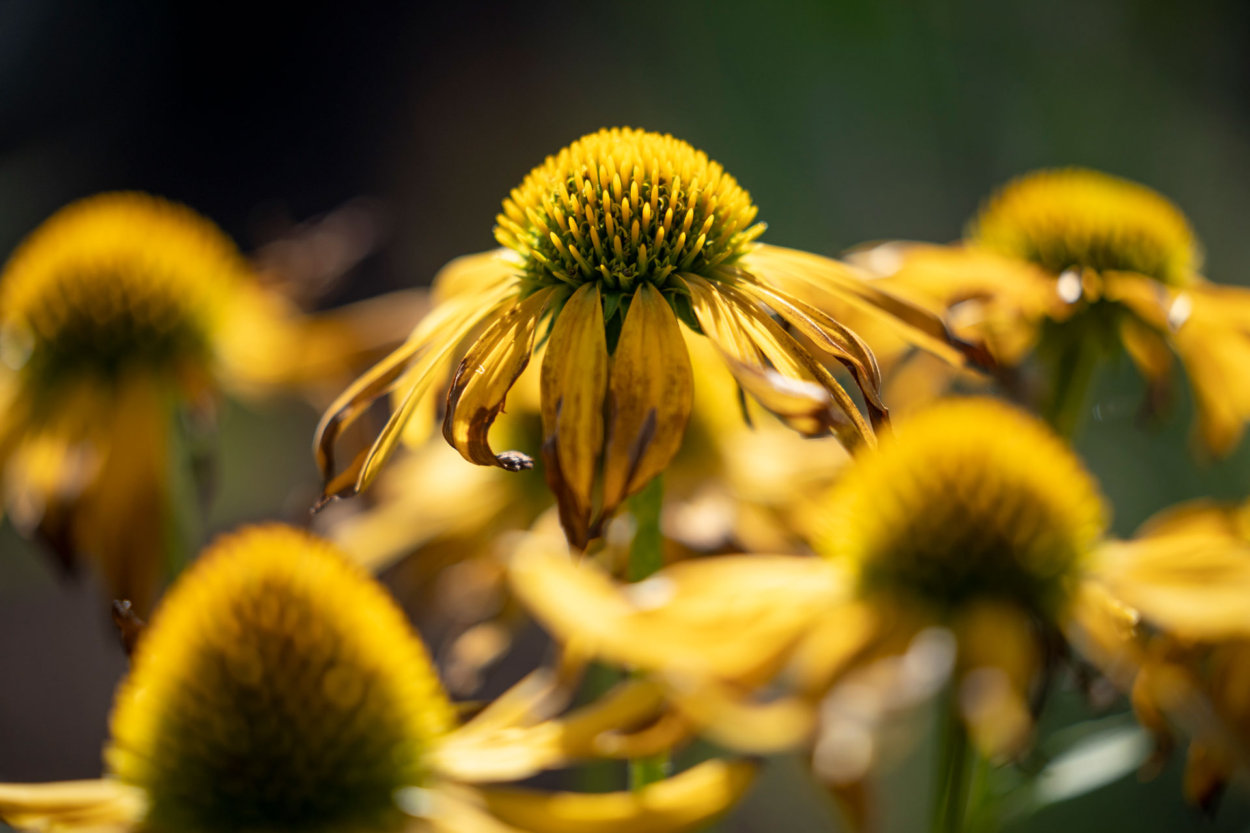
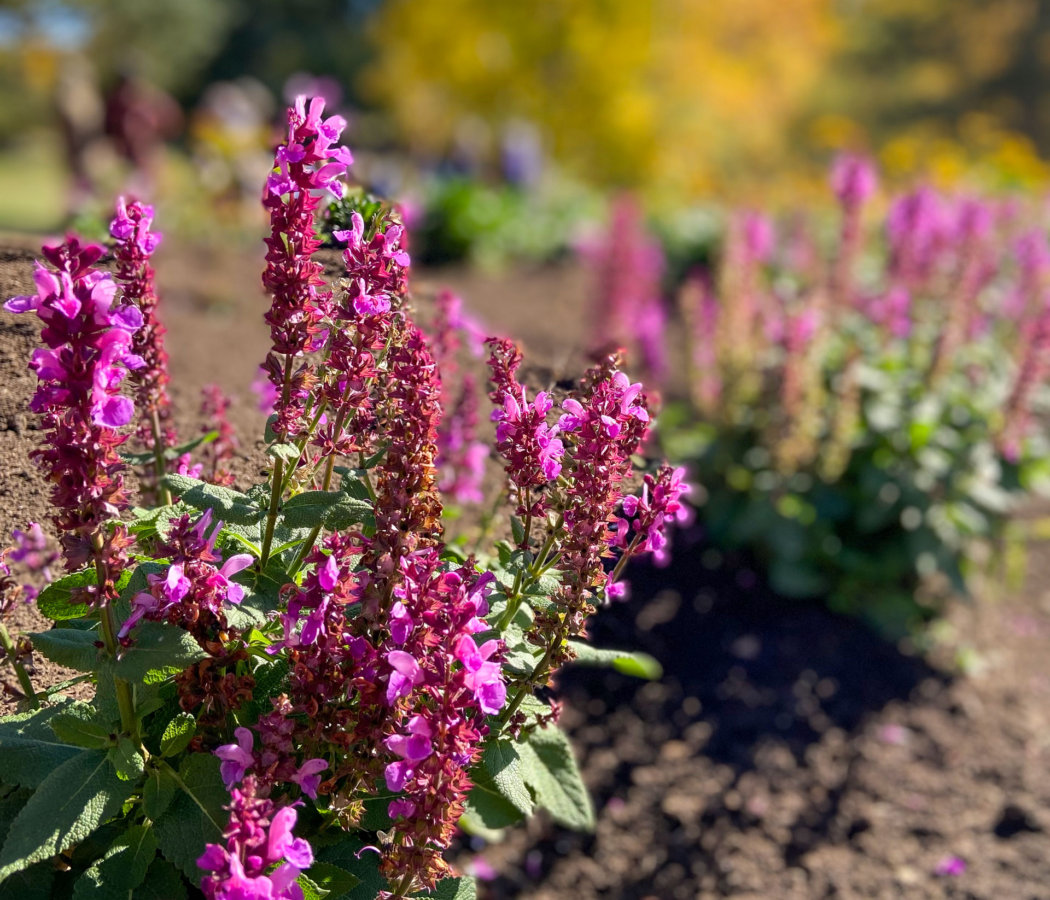
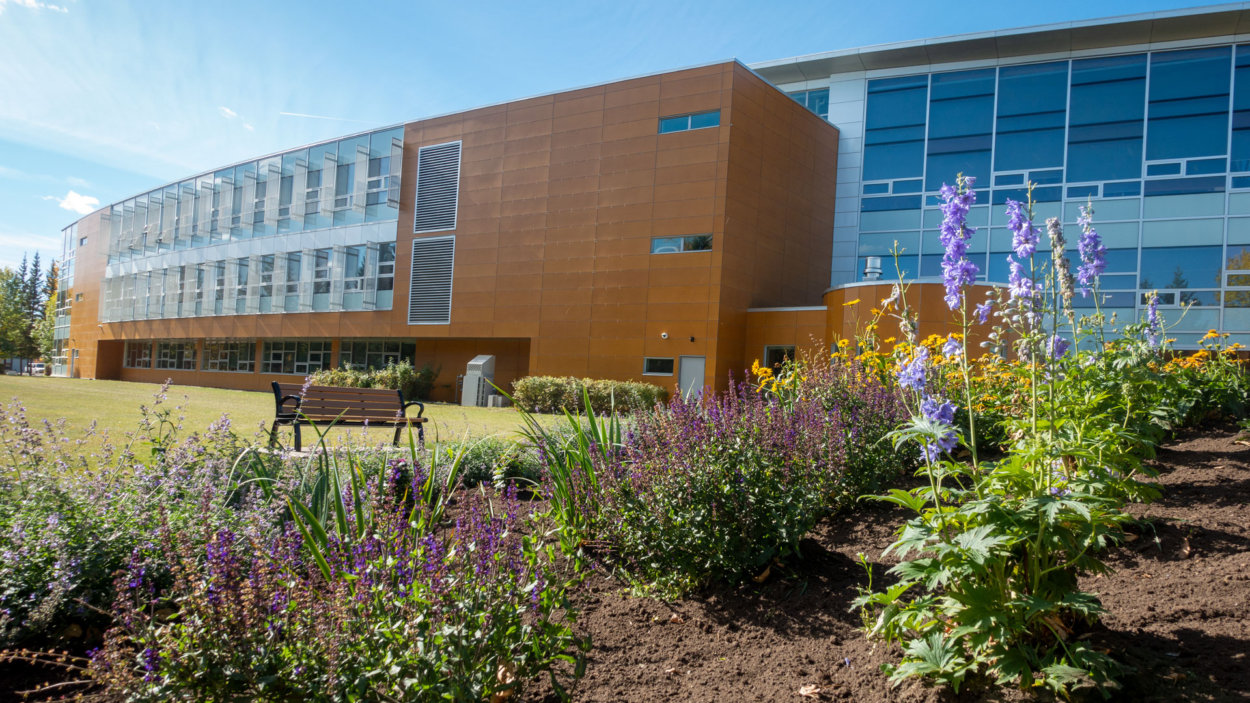
Bull’s nephew, Gary, called his aunt’s academic career an inspiration for the family to “follow in those footsteps to go into university.” He recalled fondly working with her on weekends at Morley First Nation for the 1999 International Institute on Peace Education, which Bull helped host. He also credited her work for bringing light to hidden truths of the residential school system in the Edmonton and St. Paul areas.
“A lot of the truths were hidden, and they were hidden behind a wall that most of us as Native people put up, in terms of the way we dealt with our emotions and all those kinds of things that go along with your trauma,” Gary said. “As she brought those traumas to the forefront, when it came to the residential schools, she brought that to light. And I think in a roundabout way, it was teaching us to face those fears, to face those demons that haunted us throughout our own academics, to our own school years. It takes a strong voice to do that.”
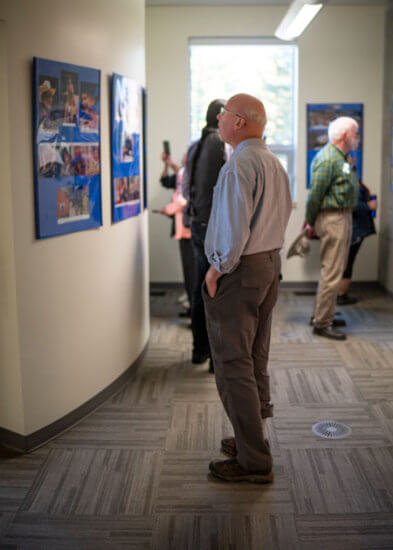
Bertha Clark-Jones O.C. Art Gallery
The Bertha Clark-Jones O.C. Art Gallery is located just outside the Nukskahtowin ceremonial room. The first exhibit in the space features an installation by Terry Lusty, a Métis Elder, artist, journalist, and AU honorary doctorate recipient. The exhibit features photographs Lusty took throughout hearings for the Truth and Reconciliation Commission of Canada, along with the federal government’s official apology.
“To me, these images are all very, very important,” said Lusty, himself a residential school Survivor. “They’ve always been critical in the Aboriginal community. They say a picture’s worth a thousand words. Every picture in there I can give you a thousand words.”
They say a picture’s worth a thousand words. Every picture in there I can give you a thousand words. Terry Lusty, Métis Elder and artist
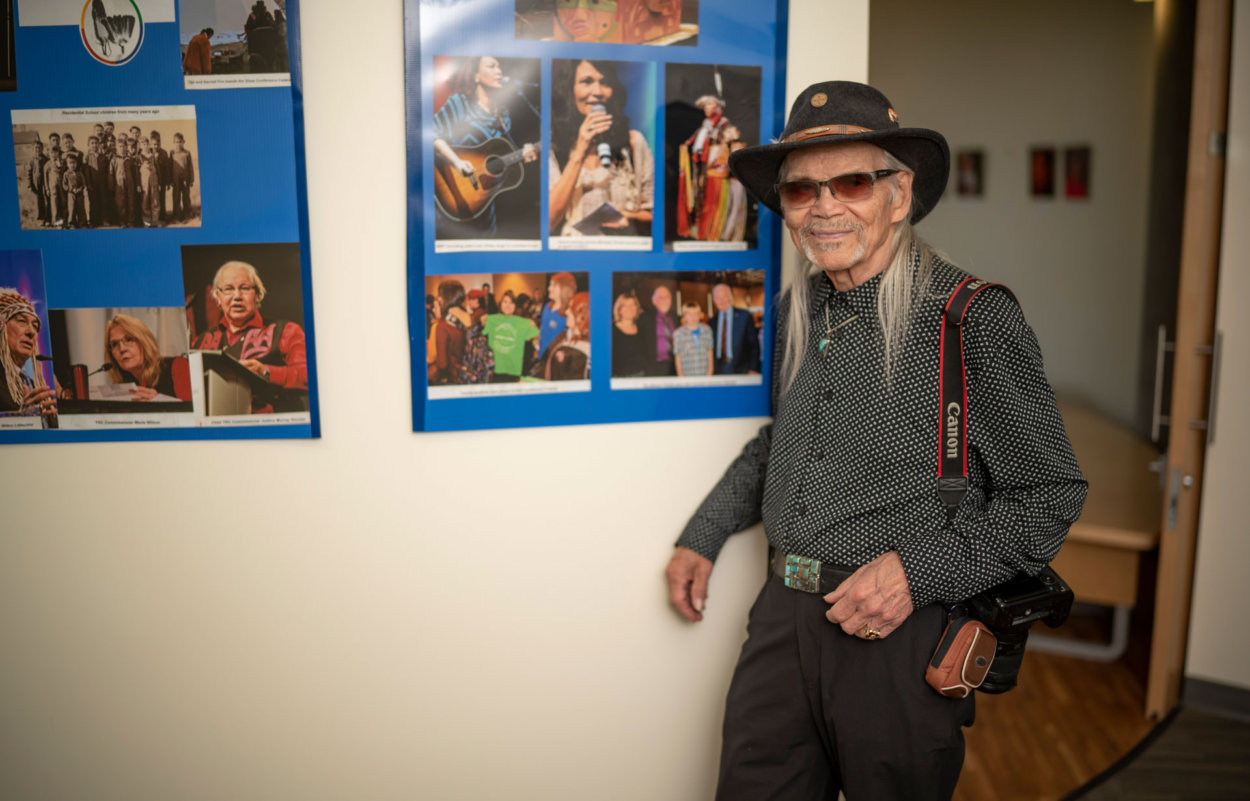
Gary Clark thanked AU for honouring his mother’s memory and for continuing the legacy of her work, which includes serving as the co-founder of the Voice of Alberta Native Women’s Society. He said his mother, a veteran and single-mom after his father succumbed to alcohol addiction, lived in poverty in subsidized housing in Fort McMurray. But because of her work as an advocate for Indigenous women and families, many Canadian political leaders—from former prime ministers Pierre Trudeau and Jean Chrétien to former Alberta premier Peter Lougheed—sought her counsel.
“Peter Lougheed came to [her home] and sat at the kitchen table taking advice from my mother, because she was right,” Clark said. “A single woman, a single mom struggling to get off welfare can still achieve greatness.”
Learn more about Nukskahtowin.